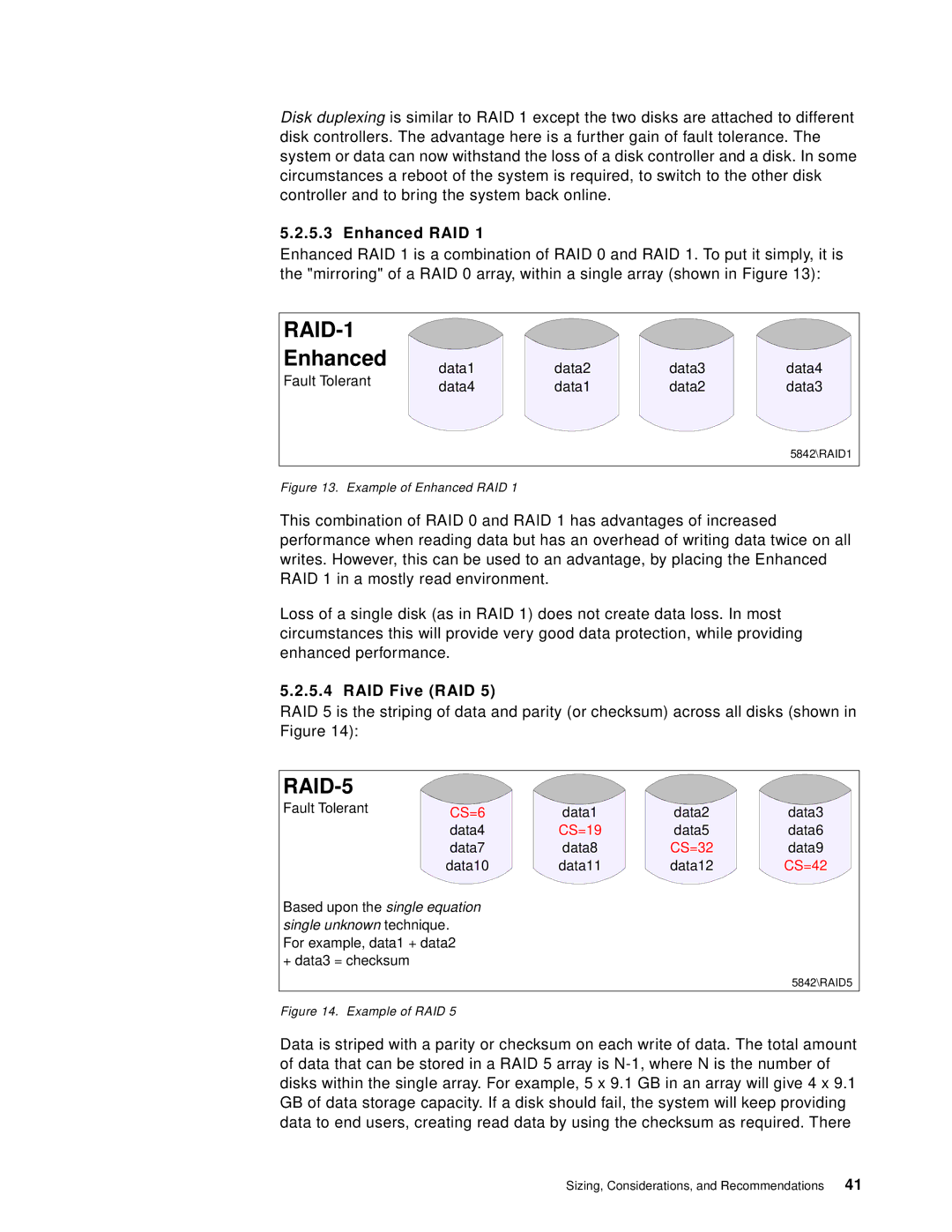
Disk duplexing is similar to RAID 1 except the two disks are attached to different disk controllers. The advantage here is a further gain of fault tolerance. The system or data can now withstand the loss of a disk controller and a disk. In some circumstances a reboot of the system is required, to switch to the other disk controller and to bring the system back online.
5.2.5.3 Enhanced RAID 1
Enhanced RAID 1 is a combination of RAID 0 and RAID 1. To put it simply, it is the "mirroring" of a RAID 0 array, within a single array (shown in Figure 13):
|
|
|
|
| |
Enhanced | data1 | data2 | data3 | data4 | |
Fault Tolerant | |||||
data4 | data1 | data2 | data3 | ||
| |||||
|
|
|
| 5842\RAID1 |
Figure 13. Example of Enhanced RAID 1
This combination of RAID 0 and RAID 1 has advantages of increased performance when reading data but has an overhead of writing data twice on all writes. However, this can be used to an advantage, by placing the Enhanced RAID 1 in a mostly read environment.
Loss of a single disk (as in RAID 1) does not create data loss. In most circumstances this will provide very good data protection, while providing enhanced performance.
5.2.5.4 RAID Five (RAID 5)
RAID 5 is the striping of data and parity (or checksum) across all disks (shown in Figure 14):
RAID-5
Fault Tolerant | CS=6 | data1 | data2 | data3 |
| ||||
| data4 | CS=19 | data5 | data6 |
| data7 | data8 | CS=32 | data9 |
| data10 | data11 | data12 | CS=42 |
Based upon the single equation single unknown technique.
For example, data1 + data2 + data3 = checksum
5842\RAID5
Figure 14. Example of RAID 5
Data is striped with a parity or checksum on each write of data. The total amount of data that can be stored in a RAID 5 array is
Sizing, Considerations, and Recommendations | 41 |
